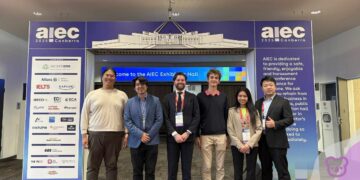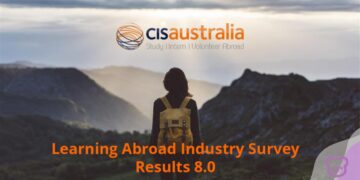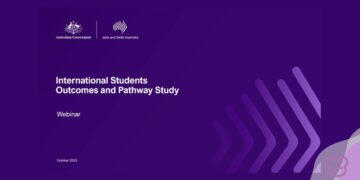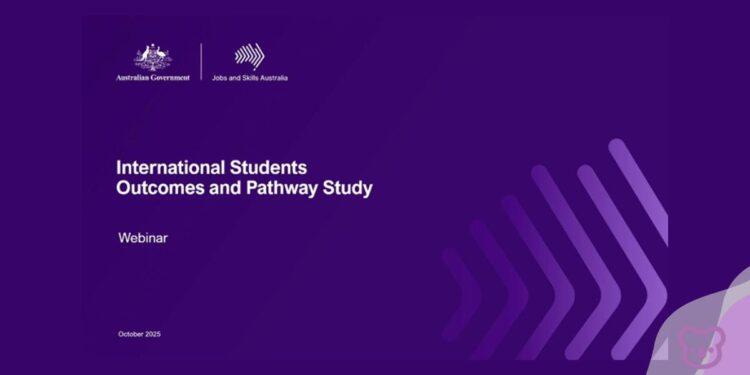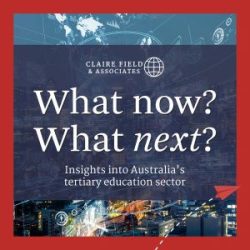In September, Jobs and Skills Australia (JSA) released its International Students Pathways and Outcomes Study, including 11 recommendations to support a strong Australian workforce (TKN260925). Yesterday, JSA hosted a webinar to analyse the findings of the study.
In his opening remarks, JSA Commissioner Professor Barney Glover urged higher education and vocational education and training providers to appreciate the importance of improving the employability skills of international students because it is “certainly affecting their ability to move through the labour market successfully”.
The webinar panel consisted of Professor Glover, JSA Deputy Commissioner Trevor Gauld, JSA Acting Executive Director Cliff Bingham and was chaired by Assistant Secretary Maria Shanahan.
The JSA study looked at experiences of graduates that stay on in Australia after their study – education, visa pathway, employment outcomes. “This report provides…an opportunity for sensible, evidence-based discussion relating to international students education,” said Gauld.
International graduates who stay long term in Australia contribute to:
- Addressing skills gaps
- Stronger retention rates for some occupations
- Social and cultural benefits to community
Through the qualitative research, JSA identified three different motivations of international students which it said was important to understand because of how they play out in student behaviour:
- An education aspiration, full-time study, did not work, and then left Australia
- Work motivation, which could also be seen alongside education motivation
- Migration motivation
During consultation with stakeholders, JSA heard that:
- There can be tension between the differing purposes of international education
- There is a need for real-time data about how many international students stay or leave over time
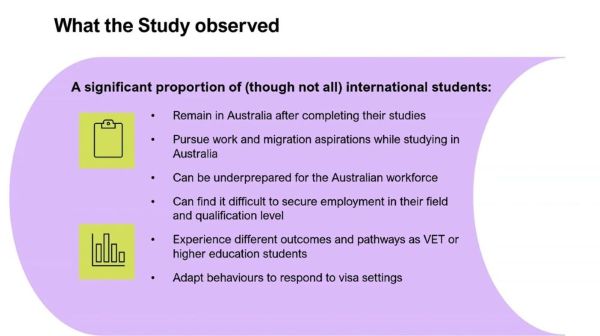
Regarding the proportion of international students that remain in Australia after completing their studies, Bingham said that “by the time we get to ten years after commencing study and start thinking about the proportion of students who achieve permanent residency, I want to be very clear that is the minority of students that do that”.
In the data, JSA found that countries of origin and visa types impacts the likelihood of international students remaining in the Australia longer term. For example, if found that Chinese higher education students were more likely to return home post-study than all remaining higher education students. More details about this, and which industries international students are employed in, are available in the report.
Based on the impact of different countries of origin and different pathways (higher education, VET and others) JSA estimates that in the early 2010s, around 35-40 per cent of all international students that came and commenced their study during that period achieved permanent residency within ten years.
While JSA doesn’t yet have the full ten years of data, it estimates that in the cohort of international students who commenced study in the later 2010s, 25-30 per cent will achieve permanent residency in ten years.
Addressing barriers to participating fully in the labour market
The JSA study found that the more successful job outcomes are guided by clear visa pathways, prioritising job readiness, and willing employers.
Barriers that need to be addressed are:
- Securing employment in their field and at qualification level
- English language proficiency
- Employer reluctance to recruit temporary visa holders:
- Employers feel less than expert in understanding visas and conditions, lowering their willingness to recruit international students
- Uncertainty about long term visa settings
- English language and cultural deficiency
- Work readiness
The report groups its recommendations into three themes:
- System-wide objectives and measures of success
- Successful transitions from study into the skilled workforce
- Supporting policy infrastructure
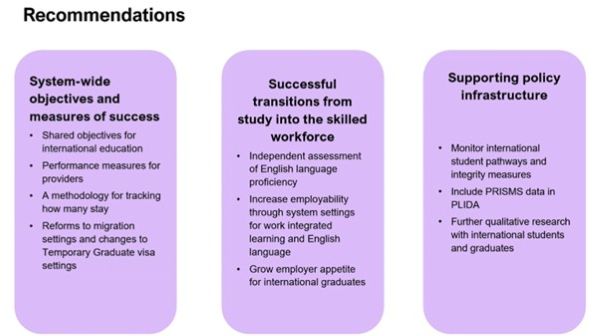
The report can be downloaded here.
Slides used in this article were sourced from the JSA webinar.


